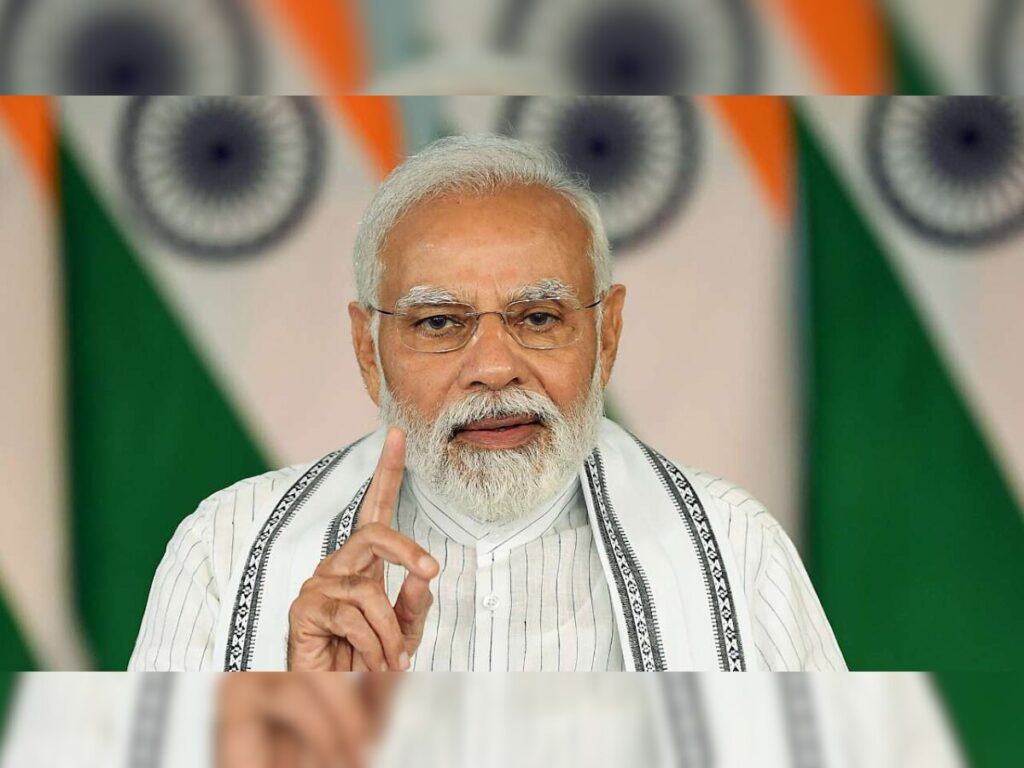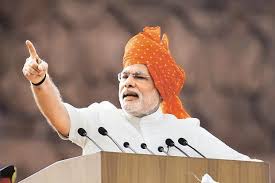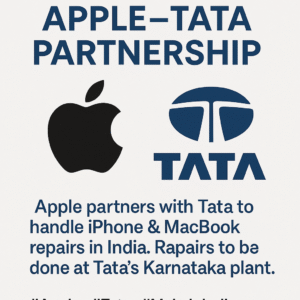Modi Govt’s Top 10 Achievements (2014–2025): Transforming India’s Destiny

India, the world’s largest democracy, has witnessed a decade of sweeping reforms and ambitious governance under Prime Minister Narendra Modi. From historic constitutional changes to bold economic reforms, infrastructure expansion, and a renewed focus on social welfare, the Modi government’s tenure from 2014 to 2025 has left an indelible mark on the country’s trajectory. Here’s an in-depth look at the top 10 achievements that have shaped “New India.”
1️⃣ Article 370 Abrogated: Integrating Jammu & Kashmir
Perhaps the most consequential political move of the decade, the abrogation of Article 370 in August 2019 fundamentally altered the constitutional status of Jammu and Kashmir. This provision had granted special autonomy to the state since India’s independence. The Modi government’s decision revoked this autonomy, reorganizing the region into two Union Territories—Jammu & Kashmir and Ladakh.
Impact:
- Administrative Integration: The move streamlined governance and brought J&K under the same set of laws as the rest of India, aiming to improve efficiency and transparency.
- Economic Boost: The region’s GDP grew by 8% in 2022–23, surpassing the national average, as new investment began flowing in2.
- Property Rights: Non-residents can now buy property in J&K, potentially spurring real estate and business development.
- Security: Government reports claim improved law and order, though the region remains sensitive, with divided public opinion and ongoing legal challenges.
This bold step remains a subject of debate, but its significance in reshaping India’s federal structure is undeniable.
2️⃣ GST Rollout: One Nation, One Tax
On July 1, 2017, India witnessed the midnight launch of its most ambitious tax reform—Goods and Services Tax (GST). By subsuming a labyrinth of central and state taxes into a single, unified tax regime, GST created a common national market for the first time since independence3.
Impact:
- Economic Efficiency: GST eliminated the cascading effect of multiple taxes, making goods and services cheaper and logistics smoother.
- Boost to Compliance: The transparent, technology-driven system increased tax compliance and widened the tax base.
- Investment Magnet: GST’s simplicity and uniformity have attracted domestic and foreign investment, fueling economic growth.
- Cooperative Federalism: The GST Council, with representation from all states, became a model for consensus-driven governance.
GST has been called “a tribute to the maturity and wisdom of India’s democracy” and remains the cornerstone of India’s tax system.
3️⃣ Digital India: Power to Empower
Launched in 2015, Digital India is the Modi government’s flagship initiative to transform India into a digitally empowered society and knowledge economy4. The program has revolutionized how Indians access government services, conduct business, and connect with the world.
Impact:
- Digital Infrastructure: Broadband highways, universal mobile connectivity, and public internet access points have reached even remote villages.
- E-Governance: Services like DigiLocker, eHospital, and online land records have made government processes faster and more transparent.
- Financial Inclusion: The JAM Trinity (Jan Dhan, Aadhaar, Mobile) has enabled direct benefit transfers and expanded banking to millions.
- Global Recognition: India now ranks third globally in digitalization, and its digital economy is among the fastest-growing in the world.
Digital India’s success has not only improved service delivery but also positioned India as a global leader in technology and innovation.
4️⃣ Infra Boom: Building the Foundations of Growth
Infrastructure has been at the heart of the Modi government’s growth strategy. From roads and railways to airports, ports, and urban renewal, the scale of investment is unprecedented5.
Impact:
- Record Investment: Over ₹15 lakh crore invested in infrastructure in the first 100 days of Modi’s third term alone, with strong fiscal support continuing year after year.
- Roads and Highways: Construction of high-speed corridors and expressways has improved connectivity, reduced travel time, and boosted logistics.
- Smart Cities: The Smart Cities Mission and Smart Villages Initiative have modernized urban and rural landscapes, improving quality of life.
- Job Creation: Massive infrastructure projects have generated millions of jobs and stimulated allied industries.
The infra boom reflects the government’s commitment to making India a global economic powerhouse.
5️⃣ PM Awas Yojana: Housing for All
Launched in 2015, the Pradhan Mantri Awas Yojana (PMAY) aims to provide “housing for all” by 2022, coinciding with 75 years of independence6. The mission targets urban and rural housing shortages, especially for the economically weaker sections (EWS), low-income groups (LIG), and slum dwellers.
Impact:
- Scale: Over 1.16 crore houses sanctioned and 93 lakh completed, with nearly ₹2 lakh crore in central assistance released.
- Women Empowerment: Ownership or co-ownership by female family members is mandatory, empowering women and ensuring security.
- Innovation: Adoption of global construction technologies for sustainable, disaster-resilient housing.
- Rental Housing: Affordable Rental Housing Complexes (ARHCs) for migrant workers and urban poor.
PMAY has improved living standards, promoted dignity, and contributed to urban renewal.
6️⃣ Ayushman Bharat: Universal Health Coverage
Ayushman Bharat Pradhan Mantri Jan Arogya Yojana (AB-PMJAY), launched in 2018, is the world’s largest government-funded health insurance scheme71213. It aims to provide free healthcare to the poorest 40% of India’s population.
Impact:
- Coverage: Over 55 crore individuals covered, with more than 8.5 crore hospitalizations approved.
- Financial Protection: Each family receives up to ₹5 lakh per year for secondary and tertiary care, eliminating catastrophic health expenses.
- Access: 31,846 empaneled hospitals, including public and private, ensure nationwide coverage.
- Inclusivity: ASHA and Anganwadi workers, senior citizens, and marginalized groups are all included.
Ayushman Bharat has brought quality healthcare within reach for millions, reducing poverty caused by medical expenses.
7️⃣ Strong Foreign Policy: India on the World Stage
The Modi government has redefined India’s foreign policy, making it more assertive, pragmatic, and globally engaged8. India’s diplomatic outreach has expanded to new regions and issues, reflecting its rising global profile.
Impact:
- Global Summits: India hosted the first International Solar Alliance summit, Pacific Island leaders, and the largest-ever gathering of African leaders on Indian soil.
- Strategic Partnerships: Upgraded ties with the US, EU, Gulf countries, and ASEAN; robust security and counter-terror coalitions with key partners.
- UNSC Leadership: Modi presided over a high-level UN Security Council event on maritime security, a first for an Indian Prime Minister.
- Act East Policy: Accelerated engagement with Southeast Asia, transforming “Look East” to “Act East.”
- Zero Tolerance on Terror: Decisive action on cross-border terrorism, including surgical strikes.
India’s foreign policy under Modi has enhanced its global standing and advanced its interests in a complex world.
8️⃣ Make in India & PLI: Manufacturing Renaissance
The “Make in India” campaign, launched in 2014, aimed to transform India into a global manufacturing hub. The Production Linked Incentive (PLI) schemes, introduced later, provided targeted incentives to boost domestic production and exports9.
Impact:
- Manufacturing Growth: PLI schemes have attracted ₹1.61 lakh crore in investment and generated over 11.5 lakh jobs.
- Export Boom: Exports under PLI have surpassed ₹5.31 lakh crore, with electronics, pharmaceuticals, and telecom leading the way.
- MSME Empowerment: 176 MSMEs have benefited, expanding India’s industrial base.
- Innovation: Shift from traditional commodities to high-value products, including electronics, processed foods, and medical devices.
Make in India and PLI have energized the manufacturing sector, reduced import dependence, and created new opportunities for Indian industry.
9️⃣ Swachh Bharat: Clean India, Healthy India
Swachh Bharat Abhiyan, launched on October 2, 2014, is the largest cleanliness drive in India’s history110. Its goal: eliminate open defecation, improve sanitation, and promote hygiene.
Impact:
- Toilet Construction: Millions of toilets built, especially in rural areas, drastically reducing open defecation.
- Sanitation Coverage: Universal sanitation coverage in urban and rural areas, with improved sewage and waste management.
- Behavioral Change: Massive awareness campaigns have made cleanliness a national movement.
- Women’s Empowerment: Safe sanitation facilities have improved health and dignity for women and girls.
- Public Participation: Citizen engagement, corporate involvement, and technological innovation in waste management.
Swachh Bharat has improved public health, reduced waterborne diseases, and instilled a sense of civic responsibility.
🔟 DBT & Welfare Schemes: Direct Benefits, Real Impact
The expansion of Direct Benefit Transfer (DBT) has revolutionized welfare delivery in India11. By transferring subsidies and benefits directly to bank accounts linked with Aadhaar, the government has curbed corruption and ensured that aid reaches the intended beneficiaries.
Impact:
- Savings: DBT has saved ₹3.48 lakh crore by reducing leakages and eliminating ghost beneficiaries.
- Coverage: Beneficiary coverage has expanded 16-fold, now reaching 176 crore people across multiple schemes.
- Efficiency: Welfare delivery is faster, more transparent, and more accountable.
- Social Security: Schemes like PM-KISAN, LPG subsidy (PAHAL), and pensions have become more effective and inclusive.
DBT has set a global benchmark for efficient, transparent, and targeted welfare delivery.
Conclusion: A Decade of Transformation
The Modi government’s top 10 achievements from 2014 to 2025 have fundamentally reshaped India’s political, economic, and social landscape. These reforms—ranging from constitutional changes and tax overhaul to digital empowerment, infrastructure, health, sanitation, and welfare—have positioned India as a rising global power and improved the lives of millions.
While challenges remain—such as ensuring inclusivity, addressing regional disparities, and sustaining momentum—the direction is clear. India is on a path toward greater prosperity, equity, and global leadership. The legacy of these achievements will be felt for generations, as the nation continues its journey toward “Viksit Bharat”—a developed, empowered, and self-reliant India.




